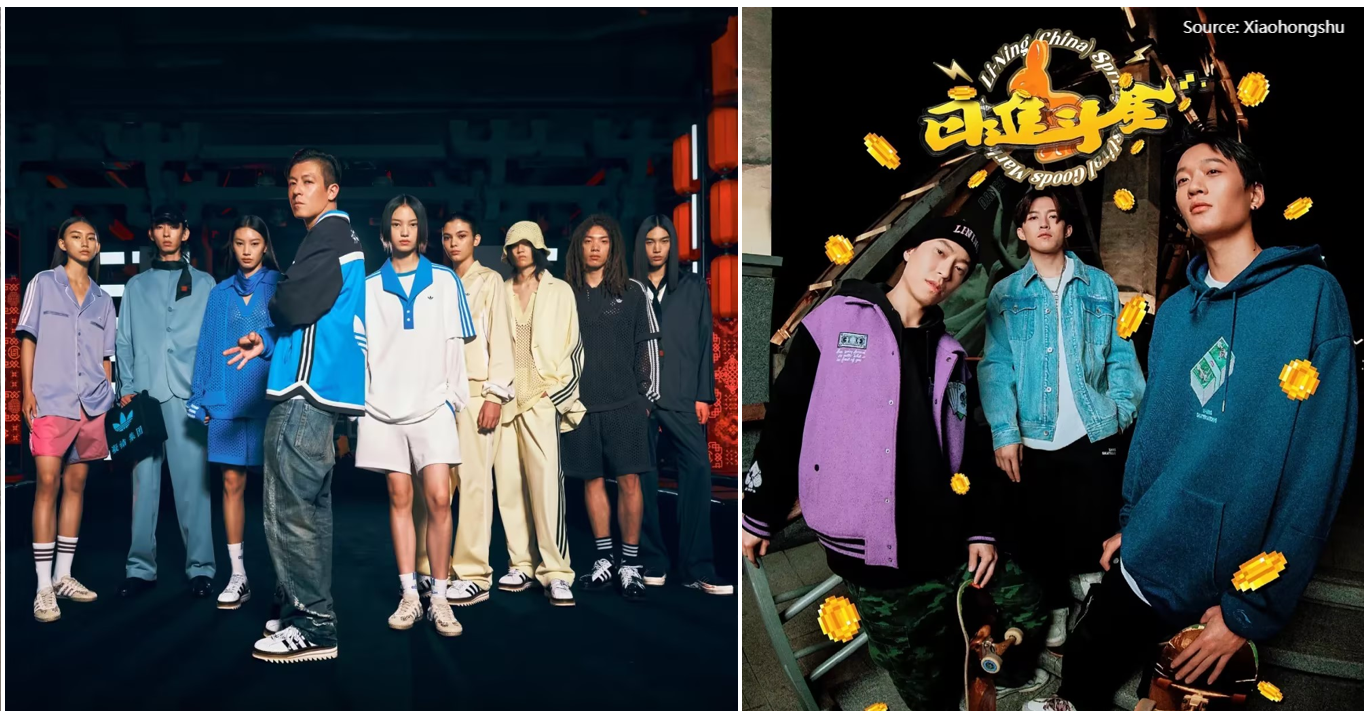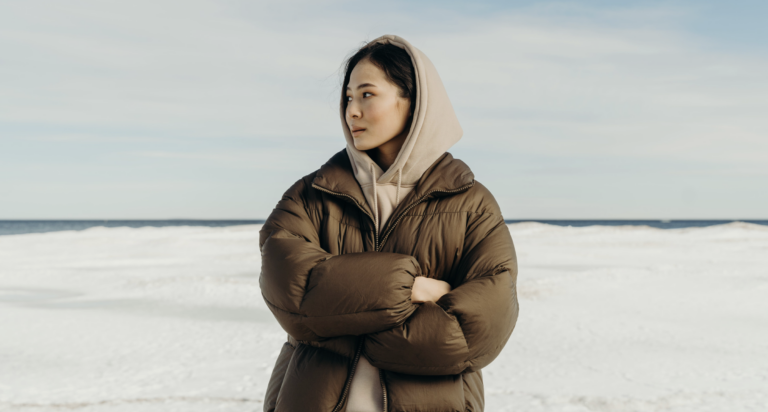The fashion industry has seen a significant shift in recent years, with China emerging as a dominant player. In 2022, China became the second largest apparel market, generating a remarkable revenue of USD 286.51 billion, representing almost 30% of the global market share.
This shift has been highlighted by Fashion IP’s 2022 global ranking. has highlighted a significant shift in the market landscape. This ranking includes the top 100 brands from North America, Europe, and Asia. Notably, recent years have witnessed a change in the market dynamics, with Asia emerging as a dominant force. Within the Asian region, Chinese local and cutting-edge designs have taken the lead, surpassing Japan and South Korea. In a drastic shift, China’s fashion IP now represents the largest category, accounting for over 50% of the Asian region. This marks a substantial increase, with China securing 24 seats in 2022, up from just 12 in 2021
Download our report on the future of sustainable fashion in China

The COVID-19 pandemic has brought about notable changes, particularly in the growth factors of e-commerce. Based on the 2023 Taobao Clothing Industry Report, China’s online retail market share as seen substantial development compared to the previous year. The pace of this expansion has outstripped the global average, reaching a remarkable 36% in 2022.
When it comes to an online purchase channel, based on the online tracking data from 2023 majority of the consumers still give their preferences towards the Taobao App, which provides “rich and diverse” product lines, a straightforward interface, and reasonable price ranges.

Consumers born in the 2000s become the main market force and vocal fashion audience
Regarded as much more daring, “trendy”, and expressive, Chinese youth from 18 to 24 years old have become the main demographic for the fashion industry. Specifically demand is allocated on “high fashion”, “trendy” and “high quality” items. This market situation occurs since Gen Z tends to channel their personalities through the clothing choices, while also being highly adaptive to the digital fashion environment.
Streetwear is the main trend for Chinese fashionistas
Alongside a variety of Chinese fashion streams, streetwear in China stands out as one of the flourishing and influential styles occupying podiums, magazine covers, and city centers.
Tracing the historical roots, it evolved from an American skating and hip hop subculture into a global phenomenon. The distinct features of the street fashion are combinations of diverse styles, fabrics and silhouettes, alongside with freedom of expression, comfort and authenticity. In China, starting in 2018, streetwear showed steady growth by 60%, outperforming other fashion categories. In other words, young Chinese consumers loadly vocalized their desire for comfortable yet stylish and relaxed outfits.
Fasionable corestones appealing to the Chinese fashionable youth
To successfully navigate in vibrant streetwear fusion, and win the attention of young Chinese customers, brands would have to immerse into the modern fashion dimensions. The apparel market is different from what it used to be even 3 years ago, with several tendencies glowing up.
Firstly, in modern reality, two-way communication channels are one of the most meaningful tools to connect with the brand’s audience. The power of the digital world is undeniable, thus, promotions and brand campaigns have to be actively done on online platforms (WeChat, Weibo, TikTok) with the utilization of effective online tools such as hashtags.
Secondly, the involvement of celebrities and influencers shows itself as an effective element of promotion campaigns. Streetwear in China is heavily influenced by KOLs (key opinion leaders), especially rappers, hip-hop artists, and celebrities appearing on a variety of shows. In that scenario, any public event with celebrities can serve as a great marketing opportunity and a successful product placement appearance.
Thirdly, the apparel and luxury trends shifted. Namely, it appears that one of the most cutting-edge street style tendencies are the incorporation of the urban core and gender-neutral features, retro-style vibes, hip-hop attributes, and combinations of sporty and luxurious designs.
Last but not least, young Chinese consumers resonate with the trend “Made in China”, in other words, there is a fostering call for authenticity, culturally distinct elements, and genuine appreciation for Chinese national motives.
Unique path of the consumers: marrying Western trends with authentic local culture
The modern fashion image of China is influenced by Gen Z and Millennials’ overseas educational background and traveling experience. However, it is not just blind emulating or following trends. Streetwear in China is a unique reflection of the Western fashion motive with an authentic local touch. Chinese people have a distinct sense of national identity, which blooms in the full strength of the fashion industry.
In order to appeal to this unique demographical feature, most of the fashion brands in China attempt to create a fusion of contemporary youth culture and traditional Chinese elements. Designers regularly incorporate Imperial China’s aesthetics or Taoism into urban or sporty clothes pieces like oversized hoodies, jackets, and sneakers.
A great example is Li-Ning, a Chinese sportswear brand established by the world-class Chinese athlete Mr. Li Ning in 1990. The brand does an amazing job of building a strong authentic identity, promoting and selling a “spirit” (精神/ jingshen).
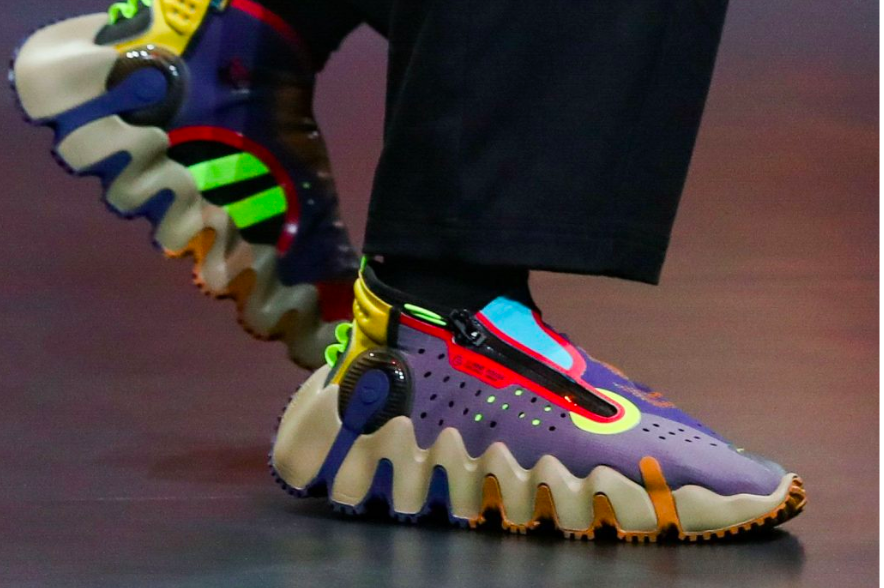
Strategic collaborations benefiting both local Chinese brands and foreign world brands
As a response to the growing demand for cultural recognition and domestic products, major fashion players are emerging from relatively smaller, local Chinese brands, which include Randomevent, Hamcus, Roaringwild, Sankuanz, and Melting Sadness. These brands adopt a strategic approach by collaborating with global sportswear giants such as New Balance, Reebok, Fila, Adidas, and Puma.
Through these partnerships, Chinese local brands effectively reach their target audience, while foreign brands seize the opportunity to gain deeper insights into consumer preferences and infuse their products with authentic cultural influences.
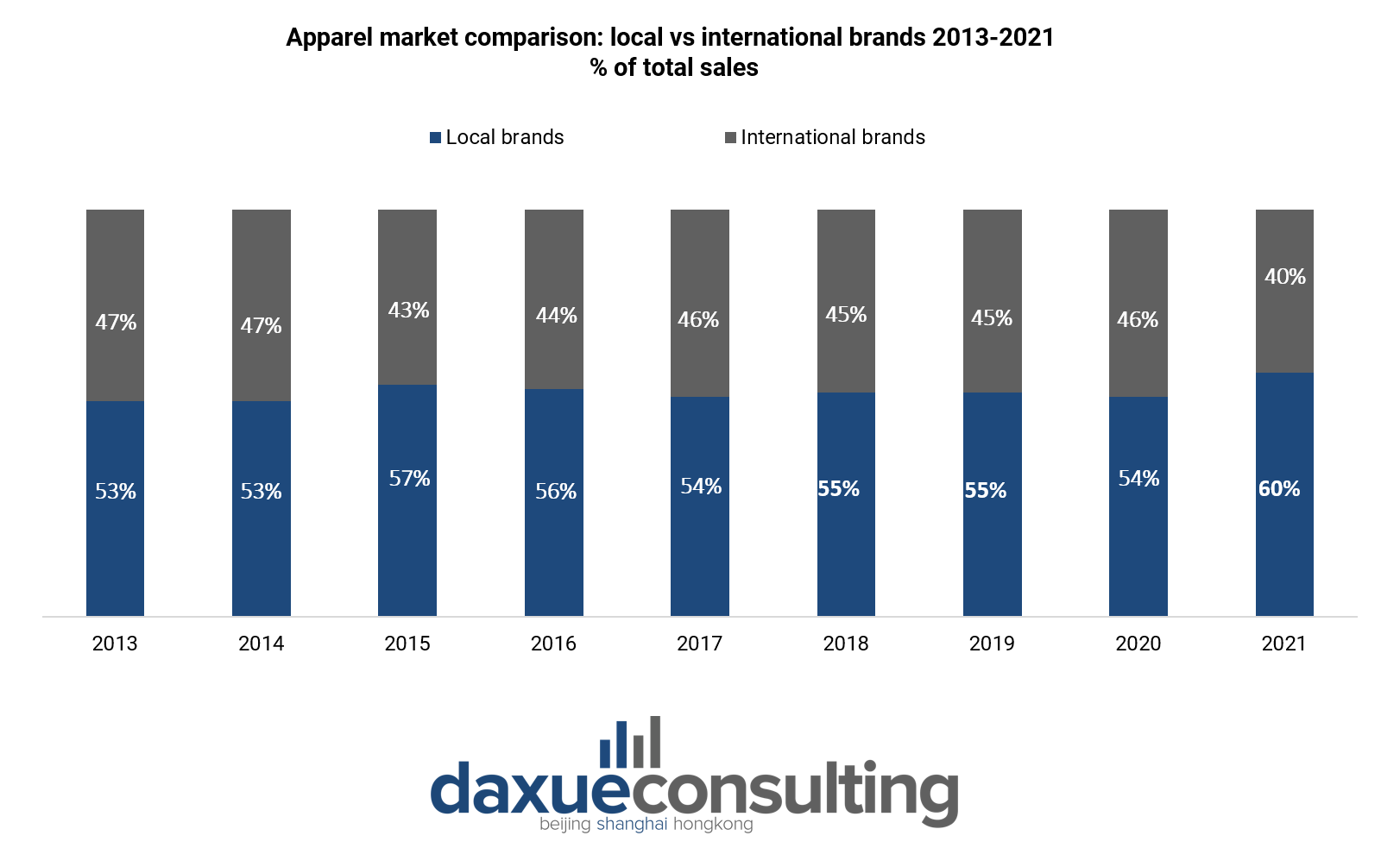
Hip Hop and rap as the main inspirational cores
Hip-hop and Chinese rap culture have had a profound impact on street fashion, serving as the wellspring and primary source of inspiration for the fashion aesthetics of young people.Stemming from the US skateboard culture, the Chinese underground movement rapidly evolved into a mainstream trend within less than a decade.
This sector is massively influenced by Key Opinion Leaders (KOLs), who are mostly rappers, hip-hop artists, or actors. According to a 2022 CBNdata report, nine out of 10 rappers are engaged in sideline businesses, often in the form of their own clothing brand. Thus, they are directly influencing streetwear fashion by literally creating and supplying fashion items.
Aside from that, Chinese talent shows keep pushing the cultural boundaries between hip-hop and fashion. First, The Rap of China launched in 2017, then the Street Dance of China followed the hype, and The New Rap of China in 2020. The trend is still continuing, attracting more and more attention. The entertainment industry inspires Chinese consumers to talk about streetwear culture and fashion, making the market more “noticeable” and appealing. For instance, actress Yang Mi, who became the Kappa’s brand ambassador, or hip hop talent show former contestants VAVA and Lexie Liu, who actively worked with Puma and Levi’s. These collaborations with beloved celebrities are beneficial for brands for multiple reasons. First, it drives audiences’ attention to the brand as a mean to be closer to their favorite idol. Second, it can demonstrate the ways the clothes can be styled and paired with casual wardrobe items. As such, it helps the consumers to get familiar with and fully embrace streetwear fashion in China.
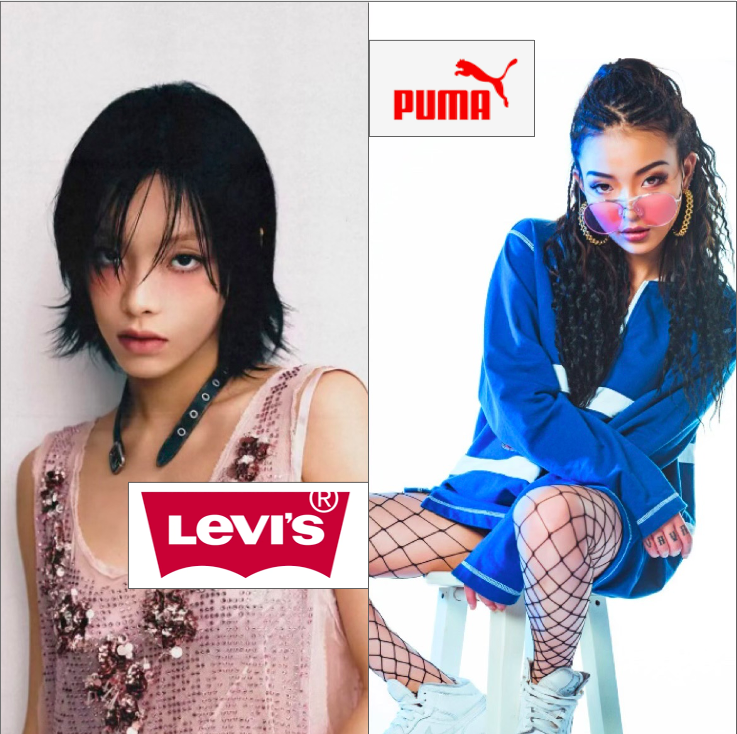
Sportswear as the only one of many layers behind streetwear fashion
Sportswear serves as the cornerstone of streetwear fashion, influencing its overall aesthetic and reflected in the frequent collaborations between sportswear and streetwear brands. With a continuous annual growth rate of 11%, China’s sportswear market is expected to reach USD 82.8 billion by 2024. Nevertheless, fashion choices of the Chinese youth do not just focus on athleisure. In fact, consumers get inspiration from the broadest pool of different styles and combinations.
Limitless fashion choices and genderless clothes trend
One of the beloved features of streetwear in China is its experimental nature. The restricting boundaries of who and how should wear clothes are extremely blurry. Streetwear is now a combination and mix of tight and loose, masculine and feminine, luxury and casual.
As the most noticeable example, genderless fashion, or mengmei style (猛妹风), noticeably present on the fashion arena for the past few years. Nowadays, trendy men’s clothing is actively purchased by female consumers and vice versa, making fashion choices highly flexible.
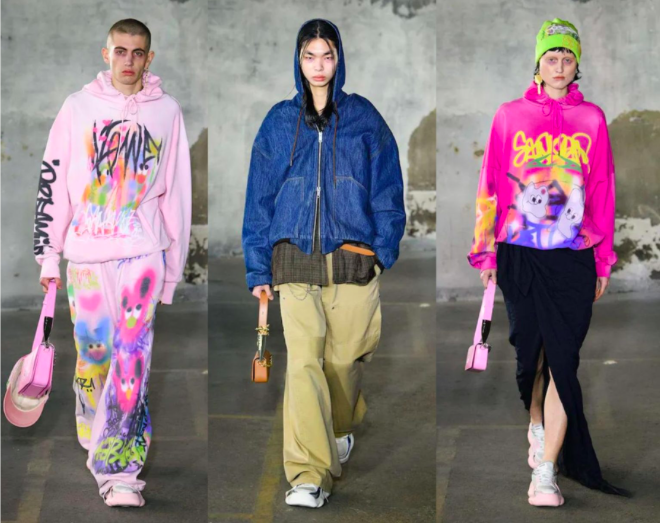
Come back of the “old school fashion” – retro-style as the new trendsetter
Retro ‘80s and ‘90s sportswear looks stand out as another layer of the streetwear. The ensemble of straight-legged jeans, vintage jerseys, and soccer shoes, called “Blokecore”, is taking over Chinese consumers. Drawing inspiration from sports events, celebrities, and brand collaborations, fashionistas are adopting the trend of mixing and matching retro items with modern accessories, such as boots, bucket hats, and headphones. On Xiaohongshu, posts related to the topic “how to style and wear jerseys” increased by nearly 100% during the FIFA World Cup 2022 season, while the hashtags #球衣潮流攻略 (Jersey fashion guide) and #blokecore have 12.6 million views and 6.8 million views on different social media platforms, respectively.
The majority of buyers interested in retro styles are females, making up 90.6% of this demographic. The age range of the buyers varies mainly between 18 to 34 years old.
What brands should know about the streetwear market in China
- The targeted demographic is the generation Z consumers from 18 to 24 years old.
- Localization and merging between Chinese traditional culture and Western trends are the strategy that echoes consumers’ demand.
- Collaborations with the worldwide brand are beneficial for both sides and can be a powerful tool for gaining attention.
- E-commerce is a new shopping reality in China and an essential component of sales growth.
- The main fashion trends are: retro sportswear, hip-hop, unisex/ genderless.
- KOLs, especially rappers, remain to be very influential figures in consumers’ decision-making and buying patterns.


